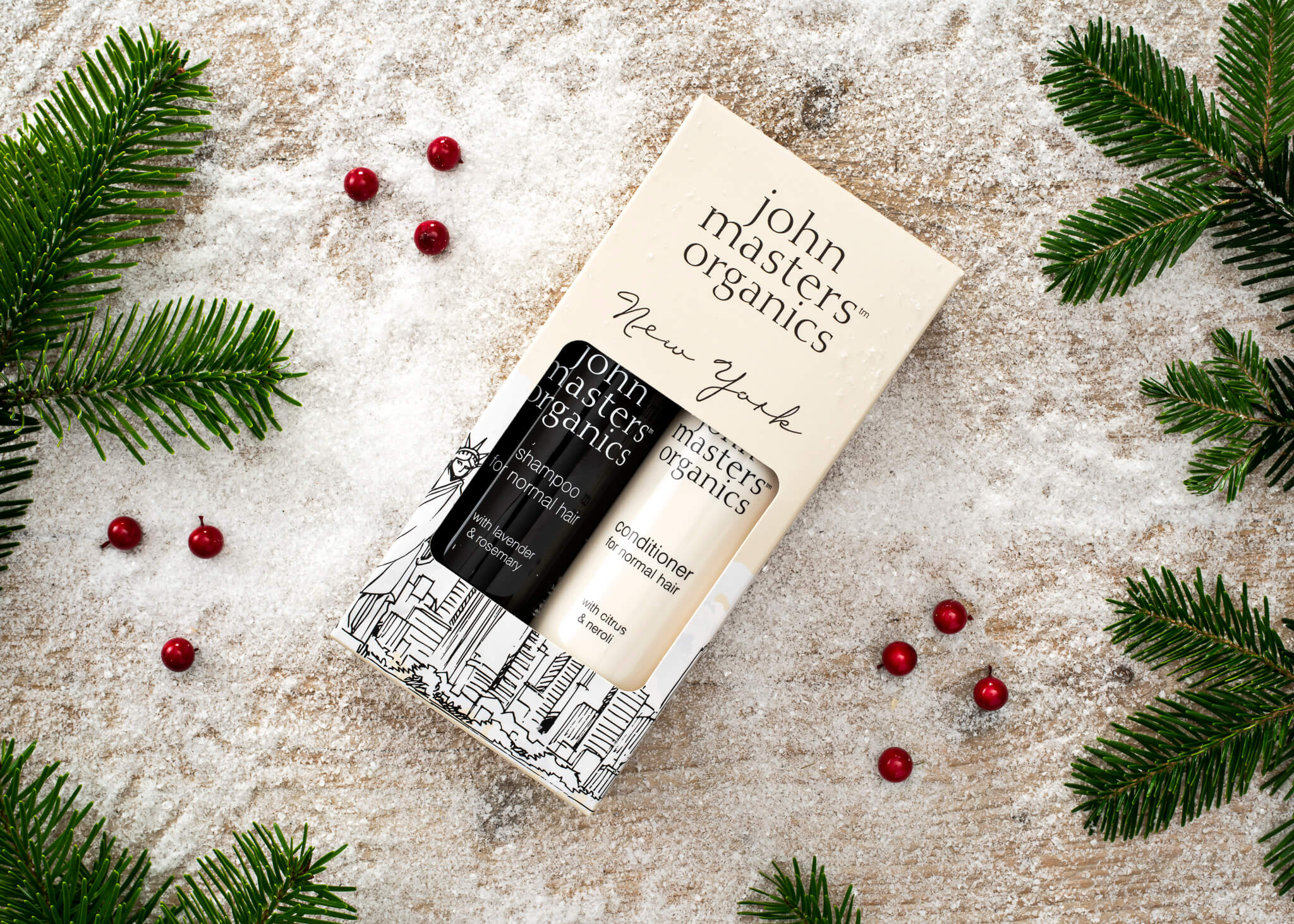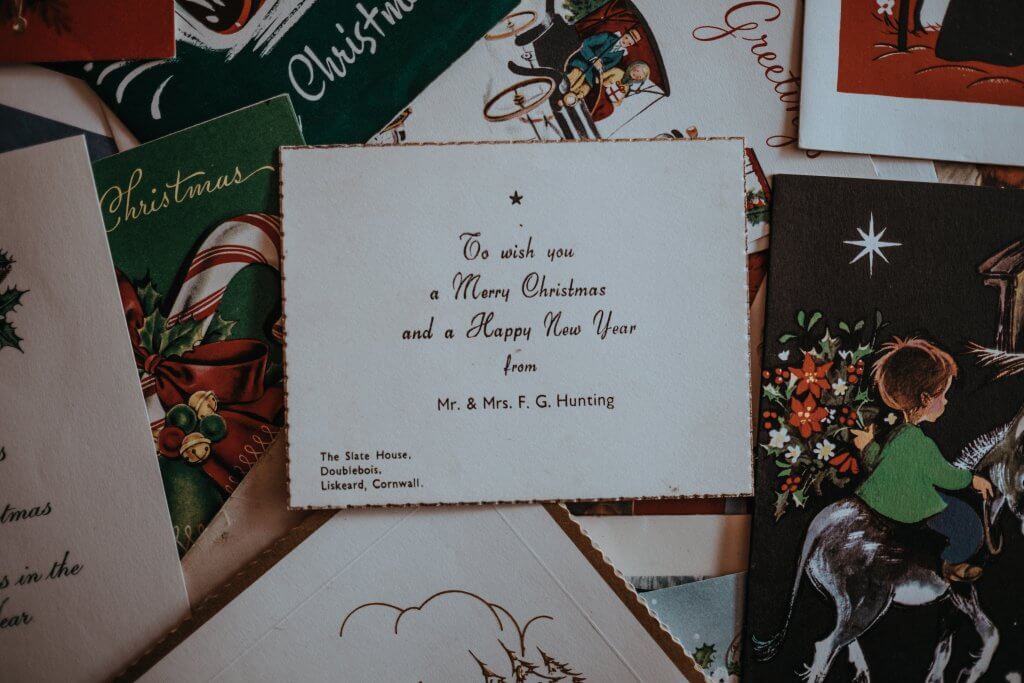Christmas Packaging Wastage Facts & Cutting Back A Bit This Year


Subscribe now! Receive 15% discount.
Don’t miss out – get 15% off your first order when you join the newsletter. It’s fast, free, and kinda smart.
You're now subscribed!
In this article:
Christmas spending hit £78.5b in 2019 in the UK and shows no sign of slowing down this year. More consumers are looking to buy online due to COVID-19 restrictions, but spending will continue, and if anything, increase.
But as spending goes up and up, so does wastage - not just in the form of uneaten turkey and Brussel sprouts, but packaging.
And when you think about it, a lot of what we get - both food and gifts - comes in packaging that's thrown out come boxing day - hence the BOXing day.
But there are a few facts that can really put into perspective how much packaging the average British household goes through, and how much goes to waste each year.
This article is as packed as a kid's stocking on Christmas eve with Christmas packaging facts. The goal isn't to make you feel bad about celebrating at Christmas, but rather help you understand what happens with what you throw out after the celebrations are done.
Hopefully, by the end of this article, you're a little more aware of how to create less waste this festive season without sacrificing fun!
Christmas packaging facts
We're all familiar with this gif of the young kid and his sister getting an N64 on Christmas:
The overwhelming joy and almost irrational excitement are what we love about Christmas.
But consider the amount of packaging that N64 came in. That square meter of cardboard that's used just to transport the product has a massive effect on the environment.
When it was released in November 2014, the PS4 sold 18.5 million units in just 7 weeks.
That's 18.5 square kms of cardboard created just from PS4 packaging in 7 weeks.
That's enough to cover central London in cardboard just from Playstation Boxes; not accounting for other gaming consoles, of which there were almost 18 million sold in the UK last year.
We can expect the PS5 that's due to be released in mid-November this year to move even more units, and therefore create even more cardboard.
While this cardboard can be recycled, a lot of paper products (like cardboard) end up taking up space in landfill, rather than being turned back into paper pulp.
And the humble Christmas Card is one of the biggest culprits of un-recycled paper waste come Christmas.

It's estimated that Royal Mail delivers around 150 million cards leading up to Christmas, with many of those ending up in the bin on boxing day.
Even though UK consumers (39%) said they'd be limiting themselves to shopping for between 5 and 10 people, the amount of wrapping paper we throw away would reach to the moon - a staggering 384,400 km.
While most wrapping paper can be recycled, too, it's the plastic-based sellotape that creates a problem.
Opt for a kraft paper-based tape, or remove as much sellotape as you can before you put your wrapping paper into the paper trash can!
Christmas food packaging and how it's wasted
The UK will use 300 million plastic cups and straws during the holiday season this year. That's 300 million pieces of single-use plastic packaging that will end up in landfill, or worse, waterways.
Try swapping out plastic plates and cups for cardboard ones, and plastic cutlery with biodegradable cutlery - just be cautious of greenwashing when finding an alternative.
It's Christmas after all, so it might be work bringing out the 'good' plates.
The beloved mince pie. Some parts of England consider it bad luck to cut one with a knife, and one should be eaten every day on the Twelve Days of Christmas to bring good luck.
It should come as no surprise that the humble Christmas Turkey isn't safe from creating packaging waste, either.
The 10 million turkeys that Brits ate at Christmas in 2019 created 3000 tonnes of plastic waste or the weight of 30 blue whales.
3.5 million meals are served each day in the UK with sausages. So your pigs in blankets this Christmas will contribute to almost 150 tonnes of polystyrene packaging that can't be recycled (That's twice the weight of a Space Shuttle).

In 2019, each British household spent more than £400 on decorations, food and drink.
While most cardboard can be recycled, the shiny and glittery paper used on Christmas bonbons can't, and therefore ends up in landfill or incinerated.
Speaking of bonbons, 15 million of them will explode in Ireland this Christmas. Most will contain bad jokes, a paper hat, and a simple plastic toy shipped all the way from China to your table.
750 million individual Brussels sprouts are sold at Christmas time, and the area used to grow them is the size of over 3000 football fields. It's estimated that of all the sprouts sold, only half are eaten.

Brits love an advent calendar, and 2023 sees more and more alternative advent calendars hit the market.
Almost half of British adults (49%) expect to receive an advent calendar with Londoners spending an average £13.60 on an advent in 2019.
Almost all the packaging associated with an advent calendar will be nothing more than waste, come the end of December.
Britons eat almost twice as much chocolate at Christmas than Americans across the pond, as chocolate and Christmas have always gone hand in hand in the UK.
The downside is that packaging on Christmas chocolate boxes often made up around half of the product's total weight. Ferrero Rocher's packaging accounted for 42% of the product's entire weight.
The solution?

Buy chocolates by the tin, and use the tin for something else after the choccies have disappeared!
Wasted packaging & effects on the environment
Of all the wine, beer, whiskey, condiments, spreads and all other products that come in glass jars that the British consume over Christmas, 13,350 tonnes of it ends up in landfill.
If it all went to recycling, it could save 4,200 tonnes of CO2 – the same as taking 1,300 cars off the road every year.

The UK has more than 50,000 bottle banks yet 5 out of every 6 glass bottles are thrown away. Changing this is crucial, as every tonne of glass recycled saves 246 kg of CO2 being pumped into the atmosphere.
Greenpeace discovered that just 1kg of wrapping paper emits over 3kg of CO2 in its production process thanks to the 1.3kg of coal needed to produce it.
Britons also create more than 4,500 tonnes of tin foil during the Christmas season - equivalent to the weight of 2000 Rhinoceros.
In 2018, it was estimated that 114,000 tonnes of plastic packaging (the weight of 650,000 red-nosed reindeers) were thrown into landfill at Christmas, rather than being recycled.
This plastic packaging will now stay in landfill for thousands of years as it slowly breaks down, creating a safe haven for pests, rodents and disease.

Last year, 125,000 tonnes of plastic packaging (5 times the weight of the Statue of Liberty) were estimated to have been generated over the festive period in the UK. Most of this plastic packaging is single-use, and a lot of it will end up polluting our waterways.
However, there is good news in all of this. Go Ultra Low found that 72% of respondents were keen to reduce their plastic waste output at Christmas, with the majority being either millennials (aged 24-35) or Gen Z (aged 18-24).
Consumers that want to be part of the change and have less of an impact come Christmas can implement a few little things this December to make a massive difference.
How to recycle more this Christmas
While Christmas is a time to celebrate and indulge, you may be wanting to cut down on a bit of wastage this year.
Don't be alarmed at the thought of 'going greener' this Christmas. Some of the best advice is as simple as replacing one material with another or just using less. And most importantly, it doesn't cost an arm and a leg to do so.
Use the paper bin
The UK uses over 12.5 million tonnes of paper each year. This equates to a forest the size of Wales.
Each tonne of recycled paper can save:
- 17 trees
- 1400 litres of oil
- 2.2 cubic metres of landfill space
- 4000 kilowatts of energy
- and 7000 gallons of water.
This lowers the demand for virgin paper, as well as the amount of energy, water and pollution needed to create it.
Swap wrapping paper for newspaper
Wrapping presents in yesterday's newspaper saves a lot of waste. Not only are you recycling something you already have, but you're also not buying new material that will just be thrown out. Avoid the tape and tie it all together with some string.

If you're feeling creative, try furoshiki, the traditional Japanese art of wrapping items in decorative cloth.
Recycle your glass
The UK glass sector has an excellent recycling record of 68.8%, one of the highest rates of any packaging material. But more can be done, especially at Christmas time. Put your beer and wine bottles, jam jars and all other glass in the right recycling bin.
Every tonne of recycled glass used rather than virgin glass saves 580kg of Co2, equivalent to charging 74,000 smartphones.
Maximise your given recycling space
All bins have limited space for waste. And you're going to create a lot more waste on the week of Christmas than you will the other 51 weeks of the year.

When it comes to putting packaging in the right bins, squish it down or crush it up. Fold up boxes or rip them apart and stand on cans to maximise the amount of space in your bin.
Bonus tip: Get the kids to rip up some boxes and stand on some cans!
Buy the 'right' real tree
The smell of a Christmas tree (and the occasional insect) is what makes Christmas great. But if you're using a real tree, make sure it comes from the British Christmas Tree Growers Association. These trees are grown within the guidelines of sustainable cultivation, don't contribute to erosion, and they won't cut down a tree if they find a bird nest in it!

However, nearly 7 million trees that are still not recycled in the UK every year can be responsible for up to 100,000 tonnes of greenhouse gases in landfills. Many local councils offer a free Christmas tree recycling program where they come and pick up your old tree, so make sure it's recycled correctly.
Support sustainable brands
Through thoughtful gift-giving, you can introduce your friends into new brands with great products. If you know your friends also want to reduce the impact on the earth, try introducing them to brands that have the same sentiment.
Many of these brands use sustainable packaging. Here are a few examples of brands we love for using sustainable packaging:
Brands that use sustainable packaging
Looking for a gift that cuts down on packaging waste, but also want to give your money to a brand that cares for the environment? Here are a few smaller, boutique European brands that are heading in the right direction.
ANTHEM
Italian clothing label ANTHEM has sustainability at the heart of everything they do. Aimed at "lovers of the Californian lifestyle", the brand's clothing is designed by local artists and produced locally. This being locally sourced means less distance is travelled between warehouse and manufacturer, so fewer carbon emissions.

The brand went the extra mile (no pun intended) by delivering their goods is recyclable tissue paper and a biodegradable mailing bag.
Studio Halbuki
There's more to packaging than the simple cardboard box or oil-based plastic. Sometimes less is more, as was the case for Studio Halbuki.

Rather than use a heavy, triple-corrugated cardboard box, this British jewellery brand opted to use a custom printed paper can with aluminium ends. The aluminium can be recycled just like a beer can, and the paper tube can be recycled just like any other paper products.
Monday's Child
Sometimes there's more to sustainability than the materials being used. Giving packaging another purpose extends its lifestyle and makes it more valuable.
London-based childrenswear brand, Monday's Child, knows this, and works reusability into their packaging design.
Knowing that their clientele, mostly young girls, all have dolls that they love, their mailer boxes double as a dollhouse.

"We wanted to create an experience for our consumer that extended just receiving their purchase in a standard delivery box." says founder, Miranda Stanford.
Raylo
Raylo's entire business model is based on cutting down consumption.
Rather than paying off a brand new phone over a series of months, you rent it, return it when you want, and the phone is refurbished and rented out again.
The brand needed to use packaging that used as little raw material as possible, but still helped them brand someone else's product.
By testing multiple prototypes, the brand was able to cut their packaging costs by 11% without sacrificing performance or branding opportunities. And it's all 100% recycled and recyclable cardboard!
Learn more about Raylo and how their optimised product packaging lowered their operational costs
POLŪ Eco Products
Disposable coffee cups are a blight on landfill, taking over 500 years to break down. POLŪ are a brand that's fighting that, by promoting the use of their reusable bamboo-fibre coffee cups.

Promoting an eco-friendly product only works if the packaging is just as eco-friendly. Their 100% recycled mailer box was a cereal box, toilet roll or school book in a previous life.
Psi Bufet
Sometimes packaging doesn't just have to look good, it has to perform well. Polish Dog Food brand, Psi Bufet delivers fresh wet dog made from organic ingredients every week. The biggest hurdle was keeping the food cold while it's being delivered, a process that often takes over 24 hours.

Learn more about the research done to help solve Psi Bufet's unique packaging problem
Working with Packhelp's packaging engineers, a 100% recyclable cardboard solution was found based on a honeycomb-like web. And it keeps the dog food below freezing for more than 24 hours.
By the way…
Now that you've been bombarded with the best ways to cut down on your wastage this Christmas, it's important to also enjoy your holidays!
Have a safe and Merry Christmas and a fantastic Holiday season, whatever you do and whoever you're with!










